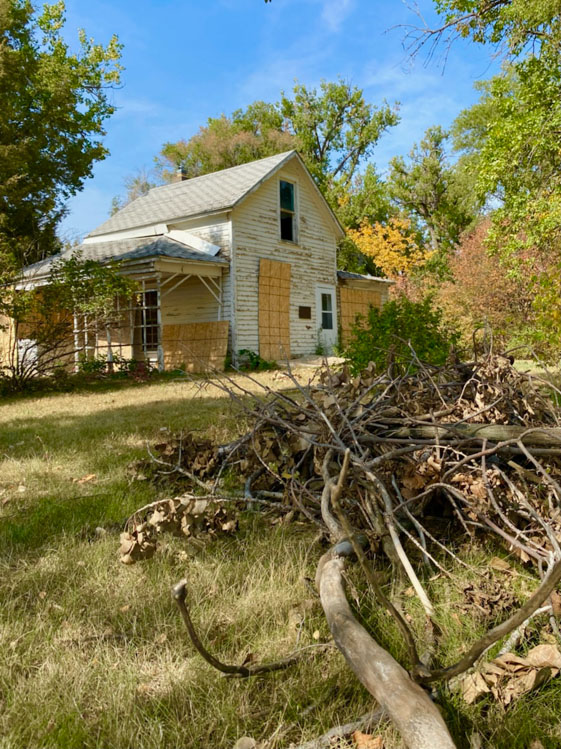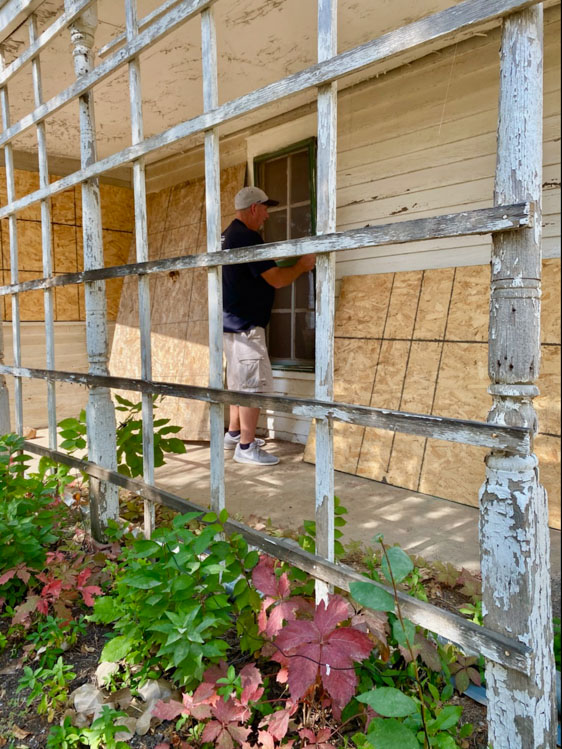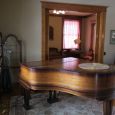The Gift of South Dakota
Subscriptions to South Dakota Magazine make great gifts!
Subscribe today — 1 year (6 issues) is just $29!
Saving the Graham House
 |
| The Mentor Graham house in Blunt, once home to Abraham Lincoln's teacher, is in danger of demolition. |
Ramshackle and neglected, the Mentor Graham house in Blunt is far removed from its heyday as a tourist attraction and point of pride in the Hughes County town of 350 people.
Graham was the schoolmaster in New Salem, Illinois, where he worked with Abraham Lincoln to refine his speech and make the 16th president one of America’s most eloquent leaders. He moved to tiny Blunt as an old man in the 1880s and lived there just four years before his death in 1886. Now Graham’s home — Blunt’s claim to fame for more than a century — is in danger of demolition.
The Lincoln/Graham relationship dates back to the 1830s when Lincoln joined New Salem’s debate society. The divisive issue was slavery, and Graham and his fellow debaters encouraged the aspiring anti-slavery lawyer to enter politics. Lincoln often stayed at Graham’s home for work or to visit. Graham tutored him on grammar and the two studied late into the night. Lincoln then taught himself law and began his political career.
Lincoln’s inauguration, where Graham sat on the platform with new president, was the proudest day of the teacher’s life. The day the president was assassinated in 1865 was among the saddest. Graham was said to have never recovered from the loss.
Free land in Dakota Territory under the Homestead Act — signed by Lincoln in 1862 — beckoned to Graham’s son, Harry Lincoln Graham. In 1882, the aged teacher joined his son, and Lincoln’s namesake, for a new start.
The family bought a boarding house, staked land claims, built a house and planted trees. Harry and his wife, as well as Graham’s daughter and granddaughter, also carried on the family mantle of teaching school with Graham assisting.
One November day in 1886, the 84-year-old educator died when he was out for his daily walk. He was buried in Blunt, but descendants later moved his body back to Illinois.
The house he left behind was opened to the public as a tribute to the man who taught Lincoln, a tourist attraction and an inspiration to students. “Every year we took a field trip and came over here,” says city councilman Randy Pool, himself a retired teacher. “When you walked in, there was always a plate of homemade chocolate chip or oatmeal raisin cookies. All the kids got a cookie.”
But that was when the town still had caretakers who lived in the home and served as tour guides. “They appreciated it and took care of it,” Pool says. “In its day, this was an immaculate building. The yard was taken care of. There were flowers planted. But those days have come and gone.”
 |
| City councilman Randy Pool peers through the windows of the Graham House, long closed to visitors. |
Eventually, the town could no longer find caretakers to live in the house that lacked modern conveniences. The city painted it and fixed the roof, but it soon fell into a state of disrepair. “When we ran out of finding caretakers, that was the downfall,” Pool says. “That and the floods.”
Two creeks meander through Blunt, and floodwater overflowed onto the floors of the house several times. Harnessing and diverting the water became a priority for the town. And there were other priorities such as streets and sewers that needed work as well, says city finance officer Trudie Feldman.
The house fell further into decay over the nearly 40 years it was vacant. The trees that Graham planted became overgrown, hiding the home until the city decided to clear the branches, reminding the community of the home’s history and significance.
So the town decided to clean up the house, too. But years of neglect come at a cost. The foundation needs to be repaired and the house raised out of the danger of floodwater. Then it has to be restored.
The city applied for a grant, but it was denied. Now council members are looking at other options. If they can’t save the house, ideas include repairing it just enough so people could look through the windows without entering or tearing it down and putting a monument in its place.
“You don’t want to see something like this destroyed, but when you have exerted as many possibilities as we have to try to find money to fix it …,” Pool says. “You’re looking at well over $100,000 to restore it back to where people could be in it. Now, you could put $40,000 into it and have a building that you could never go into. Does that building mean as much to people who would stop as it would if you could go in to look at it?
“It’s kind of a no-win situation. I don’t want to see it torn down, but I don’t want to see it fall down, and that’s not too far away.”
For more information on the Mentor Graham house or to donate, call Feldman at (605) 295-0486.










Comments